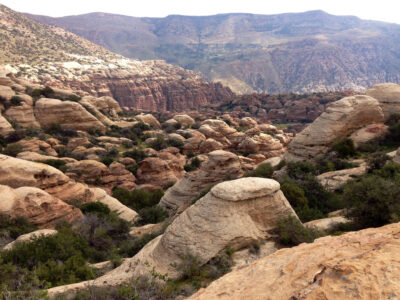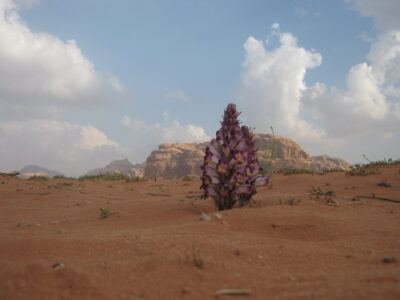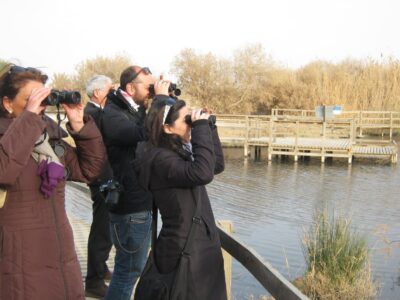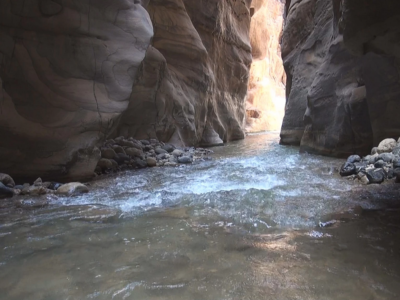Jordan nature reserves, Jordan, a nation often celebrated for its rich historical tapestry and ancient wonders, possesses an equally compelling, yet perhaps less widely known, natural heritage. From the dramatic desert landscapes of Wadi Rum to the lush Mediterranean forests of Ajloun, and from the life-giving wetlands of Azraq to the rugged canyons leading to the Dead Sea, the country is a mosaic of diverse ecosystems. This ecological richness, however, faces increasing pressures from climate change, urbanisation, and human activity. Recognising the critical need to preserve these invaluable natural assets, Jordan has established a comprehensive network of protected areas, collectively known as Jordan nature reserves. These sanctuaries play a pivotal role in conserving the nation’s unique biodiversity, protecting endangered species, and promoting sustainable development.
The concept of nature conservation in Jordan gained significant momentum with the establishment of the Royal Society for the Conservation of Nature (RSCN) in 1966. This independent non-governmental organisation has been instrumental in designating, developing, and managing the majority of the country’s protected areas. The RSCN’s vision extends beyond mere protection; it encompasses sustainable tourism, community involvement, and environmental education, ensuring that conservation efforts benefit both nature and the local populace.
Jordan’s geographical position at the crossroads of three continents – Asia, Africa, and Europe – contributes to its ecological diversity. This unique biogeographical location results in a fascinating blend of flora and fauna, including species typically found in different climatic zones. The Jordan nature reserves are designed to capture and preserve this extraordinary range of habitats, from arid deserts and basaltic plains to verdant forests and significant wetlands. They serve as vital refuges for a multitude of plant and animal species, many of which are endangered or endemic to the region.
The importance of these reserves extends beyond national borders. As part of a global effort to combat biodiversity loss, Jordan’s protected areas contribute to the international network of vital ecological sites. They safeguard migratory bird routes, protect unique geological formations, and preserve cultural landscapes that have co-evolved with nature over millennia. Through meticulous scientific research and habitat restoration programmes, the RSCN and other governmental bodies strive to maintain the ecological integrity of these precious sites, ensuring their survival for future generations.
The network of reserves in Jordan offers a fascinating glimpse into the country’s varied natural beauty. Each reserve presents a unique set of ecosystems, challenges, and opportunities for conservation and eco-tourism.
Dana Biosphere Reserve: Perhaps the most iconic of the Jordan nature reserves, Dana Biosphere Reserve is Jordan’s largest protected area, spanning over 320 square kilometres of spectacular mountains and wadis. It is a true crossroads of biogeographical zones, hosting four distinct biogeographical zones: Mediterranean, Irano-Turanian, Saharo-Arabian, and Sudani. This unique confluence supports an astonishing diversity of life, including over 800 plant species, 215 bird species, and 38 mammal species. Among its most notable inhabitants are endangered species such as the Caracal, Syrian Serin, and the globally threatened Lesser Kestrel. The reserve’s dramatic landscapes range from rugged sandstone cliffs and deep canyons to lush terraced gardens. Beyond its natural wonders, Dana is home to the ancient Nabataean village of Feynan, and its local communities, particularly the Ata’ta Family, are deeply involved in the reserve’s eco-tourism initiatives, producing handicrafts and offering authentic cultural experiences.
Wadi Rum Protected Area (Wadi Rum Desert): A UNESCO World Heritage Site, Wadi Rum is not traditionally managed by the RSCN but is a large protected area emphasising both natural and cultural heritage. Known as the “Valley of the Moon,” this majestic desert landscape is characterised by towering sandstone and granite mountains, natural arches, vast open plains, and narrow gorges. Its unique desert ecosystem supports resilient flora and fauna, adapted to extreme conditions. Wadi Rum also holds immense archaeological significance, with petroglyphs, inscriptions, and archaeological remains testifying to 12,000 years of human occupation, including the Nabataeans. Its dramatic scenery has attracted filmmakers and adventurers alike, making it a cornerstone of Jordan’s tourism industry. Eco-tourism here focuses on sustainable desert experiences, often managed by local Bedouin communities.
Azraq Wetland Reserve: A stark contrast to the arid landscapes, the Azraq Wetland Reserve in eastern Jordan is a vital oasis in the heart of the desert. Once a vast natural wetland fed by underground springs, Azraq was a critical stopover for millions of migratory birds on their journeys between Africa and Eurasia. It also provides a unique habitat for various fish, amphibian, and insect species, many of which are endemic to the region. However, over-pumping of water for urban and agricultural use severely depleted the wetlands in the late 20th century, bringing it to the brink of collapse. Significant efforts have been made by the RSCN to restore and manage the remaining wetland areas, ensuring a continued, albeit reduced, refuge for wildlife. Azraq stands as a poignant reminder of the delicate balance between human development and environmental preservation.
Mujib Biosphere Reserve (Wadi Mujib): The lowest nature reserve in the world, the Mujib Biosphere Reserve plunges from an elevation of 900 meters above sea level to 400 meters below sea level, reaching the Dead Sea. This dramatic elevation change creates a unique and diverse environment, encompassing rugged mountains, deep canyons (wadis), and perennial rivers that flow into the Dead Sea. The reserve is renowned for its spectacular canyoning adventures, where visitors can navigate through water-filled gorges. Its diverse habitats support over 420 plant species, 102 bird species, and 10 mammal species, including the elusive Caracal, Hyena, and the Nubian Ibex that gracefully navigate its steep cliffs. Mujib’s proximity to the Dead Sea adds another layer of ecological interest, showcasing adaptations to saline environments.
Dibeen Forest Reserve: Located in the north of Jordan, Dibeen Forest Reserve is a relatively small but significant protected area. It is characterised by its healthy pine-oak forest, primarily composed of Aleppo pine and Evergreen oak, representing one of the last remaining examples of ancient pine forests in the Middle East. The reserve is home to at least 17 species of endangered animals, including the Persian squirrel, which plays a crucial role in the forest ecosystem by dispersing seeds. Dibeen’s cool climate and lush vegetation offer a refreshing escape and a vital haven for biodiversity in an increasingly developed region. It also supports important research on forest ecosystems and serves as a green lung for nearby urban areas.
Ajloun Forest Reserve: Another northern gem, Ajloun Forest Reserve is situated in the highlands of Ajloun, an area historically known for its Mediterranean evergreen oak forests. This reserve is a prime example of the beautiful and productive forests that once covered much of the northern Jordanian landscape, providing a crucial habitat for various wildlife, including Roe Deer (reintroduced), Wild Boar, and Striped Hyena. The reserve offers hiking trails, a wildlife visitor centre, and opportunities for responsible tourism that directly benefit local communities, empowering them through handicraft production and sustainable accommodation. Ajloun represents a successful model of how conservation can be integrated with community development.
Shaumari Wildlife Reserve: Established in 1975, Shaumari Wildlife Reserve holds a unique place among reserves in Jordan as the first wildlife reintroduction centre in the country. Its primary mission was to breed and reintroduce globally endangered desert species that had once roamed the Jordanian deserts. The most successful reintroduction program has been that of the Arabian Oryx, a magnificent desert antelope that was hunted to near extinction in the wild. Shaumari now boasts a thriving herd, contributing significantly to the global conservation efforts for this species. Other species found here include the Ostrich, Goitered Gazelle, and Persian Onager. The reserve also focuses on protecting the fragile desert environment and its unique flora.
These Jordan nature reserves, along with smaller protected areas like the Burqu Protected Area and Yarmouk Forest Reserve, form a robust network that safeguards the nation’s natural heritage. They are not merely fences around pristine nature; they are dynamic landscapes where conservation, research, and community engagement intertwine.
Challenges and the Future of Conservation in Jordan
Despite the significant achievements in establishing and managing Jordan nature reserves, several challenges persist. Water scarcity, exacerbated by climate change and increasing demand, poses a severe threat, particularly to wetland ecosystems like Azraq. Human encroachment, urban expansion, and unsustainable agricultural practices also put pressure on reserve boundaries and surrounding habitats. Poaching, though mitigated by enforcement, remains a concern for vulnerable wildlife populations.
The future of reserves in Jordan depends on continued national commitment, international cooperation, and public awareness. Strengthening environmental legislation, investing in sustainable resource management, promoting eco-tourism, and fostering a deeper appreciation for nature among younger generations are crucial steps. The RSCN continues to innovate, exploring new technologies for monitoring and protection, and expanding its community-based conservation programs. By continuing to invest in these vital sanctuaries, Jordan not only preserves its natural legacy but also contributes significantly to global biodiversity conservation efforts, ensuring that its unparalleled natural beauty endures for generations to come.



